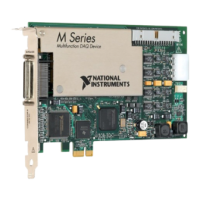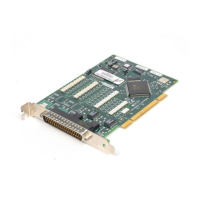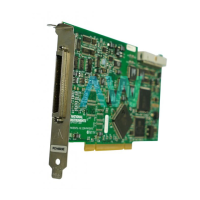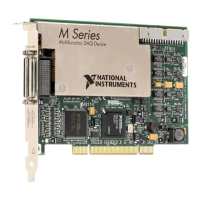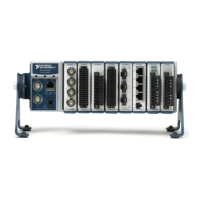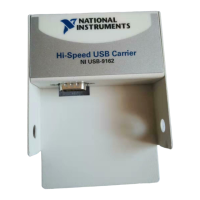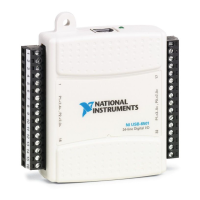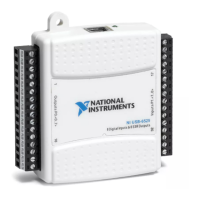© National Instruments | 4-21
X Series User Manual
Any potential difference between the device ground and the signal ground appears as a
common-mode signal at both the positive and negative inputs of the NI-PGIA, and this
difference is rejected by the amplifier. If the input circuitry of a device were referenced to
ground, as it is in the RSE ground-reference setting, this difference in ground potentials would
appear as an error in the measured voltage.
Using the DAQ Assistant, you can configure the channels for RSE or NRSE input modes. Refer
to the
Configuring AI Ground-Reference Settings in Software section for more information about
the DAQ Assistant.
Field Wiring Considerations
Environmental noise can seriously affect the measurement accuracy of the device if you do not
take proper care when running signal wires between signal sources and the device. The
following recommendations apply mainly to AI signal routing to the device, although they also
apply to signal routing in general.
Minimize noise pickup and maximize measurement accuracy by taking the following
precautions:
• Use differential analog input connections to reject common-mode noise.
• Use individually shielded, twisted-pair wires to connect AI signals to the device. With this
type of wire, the signals attached to the positive and negative input channels are twisted
together and then covered with a shield. You then connect this shield only at one point to
the signal source ground. This kind of connection is required for signals traveling through
areas with large magnetic fields or high electromagnetic interference.
Refer to the Field Wiring and Noise Considerations for Analog Signals document, for more
information. To access this document, go to ni.com/info and enter the Info Code rdfwn3.
